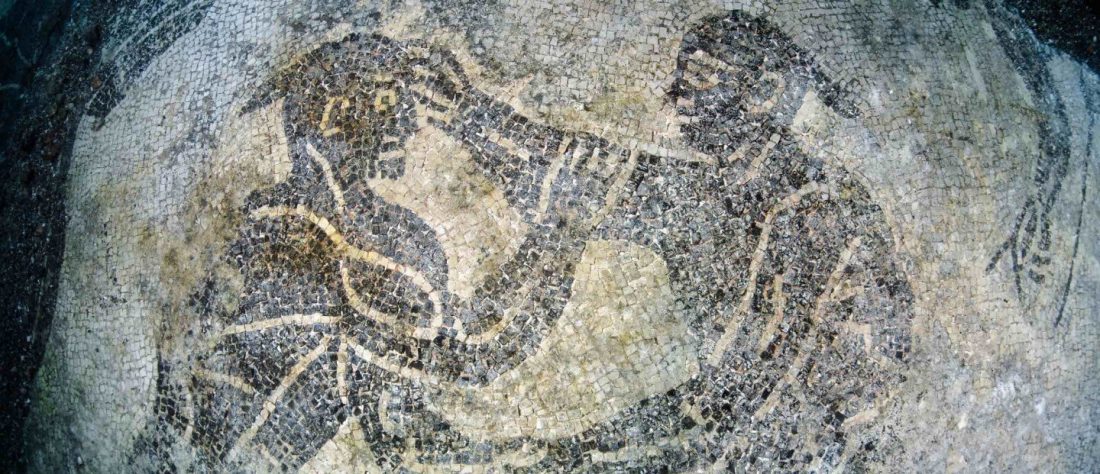
The historical dive
The idea of protecting what we know, also comes from the fact that we appreciate what we understand. From my studies of art and literature, I have always been passionate about history, beautiful things and especially stories … Rocked by adventure literature, diving is already an adventure in itself. We find ourselves in a universe that is not ours and exploration begins as soon as we don our diving gear and make the big jump into the blue. During our dive trips, it was a huge surprise to discover Roman statues and mosaics – a whole sunken world. The mythical land of Atlantis was there, up close!
The most important thing is to identify competent clubs allowing you to dive on these treasures of history with security and with the appropriate permission.
Historical wrecks
Our very first contact with a piece of history was, without any doubt, the Liberty in Bali. The Liberty has a fascinating story – almost sunk during World War II , towed to this small island and then being propelled 15m below the surface by the eruption of a volcano. We have often dived on wrecks, but they were only empty shells, sunk and used as artificial reef. Interesting but missing a little something – the history of the ship, what happened, how it sank. We then left for the Philippines to Coron Bay, on Busuanga, which is famous for its historical shipwrecks – Japanese warships, sunk in 1944 by American navy planes. And there it was incredible! Historical wrecks y do not necessarily lay flat on a sandy bottom,in 25m without currents. There they are close to the coast but often with limited visibility. Covered with corals, they are impressive. We can still see the huge boilers, or even the impacts of torpedoes.
Malta with its shipwrecks sunk in port, by German bombing, added another page: wrecks-which-tell-you-their-history. You reach them and find them in often average conditions – an experiment, even an adventure apart! If you add to that the description of the battle by a specialized guide, as seen from the walled city of Valletta, it’s a dessert with a cherry on top!
The Roman imperial saga
The bay of Naples is, like all Italy, charged with history. What we did not expect to see was these remains … underwater! Because of seismic instability, the rich town of Baia, the Ibiza of antiquity, found itself under water. The sublime villas of the emperors and rich romans, Augustus, Agrippina, Claudius, Nero, are found under the surface, buried in the sand and silt of the bay! It was fascinating to see these two thousand plus year old mosaics, on which came to rest a small octopus! Imagine, this mosaic could be contemplated only by a few privileged who, fins on feet and regulator in mouth, went to meet these marvels. The carved pillars, the ancient paved ways, are discoveries that allow you to better understand the great history. Agrippina was murdered by her son, the bloody Nero, only a few miles away from this incredible dining room where the Emperor Claudius came to relax in great company! The historical explanations given by the diving club left me still hungry for information and it was Chiara, an official guide, who gave a fuller explanation. Villa Emperor Claude is only partially immersed, we can still admire the galleries of the big house and the temple with oculus of the imperial residence.
As you finish a superb Neapolitan pizza, you can think back on a wonderful time travel experience.
Greek culture colonies!
Another journey, another adventure. After the discovery of the wonders of the Roman Empire, underwater; we wanted more – historical remains that only we, divers, could admire! So we went to Sicily, where Alex, a passionate diver-archaeologist, helped us discover Naxos bay with the remains of the ancient Greek outpost. There, the time jump was even greater; we went back 2500 years. With Taormina, its ancient Greek theater and its volcano, in the background, the blue waters around Isola Bella, but also Aci Trezza revealed its ancient anchors and rocks thrown by Polyphemus, the Cyclops. We tasted the mythology of Homer, the voyage of Ulysses.
Alex and Martha, passionate archaeologist – divers, guide you in the meanders of the archeological museum of Naxos, letting you discover the result of their excavation campaigns. And if like me, you have a passion for underwater archeology (Indiana Jones becomes alive!), you can even experience an introduction to the discipline! Sicily having, moreover, preserved an impressive archaeological background on its ancient history, it was natural that we wanted to complete our dives by a visit to the terrestrial vestiges. The discovery of the valley of the temples of Agrigento and a stroll in Ortigia at Syracuse completed this dive into the beginnings of our civilization. We have even noticed that Sicilians feel even more Greek than today’s Greeks; claiming a cultural heritage, at the height of the Athenian acropolis! A bit megalo anyway!